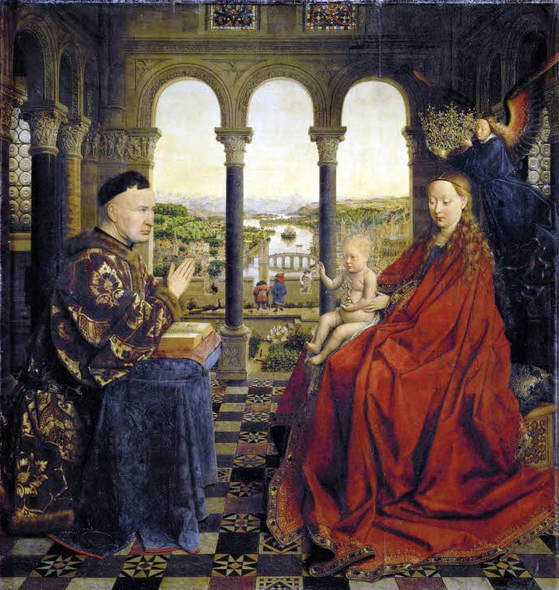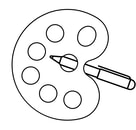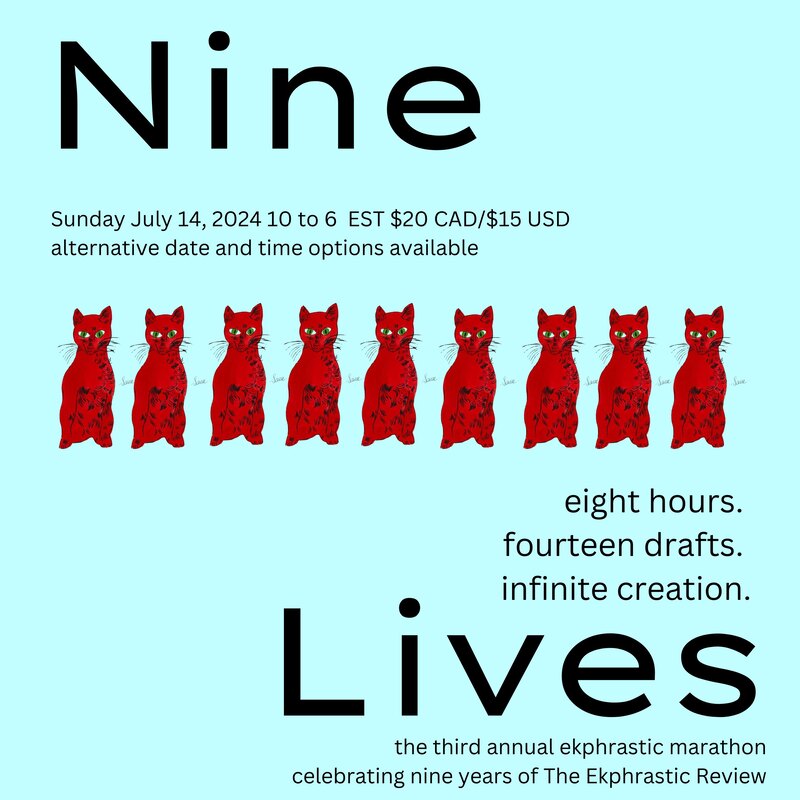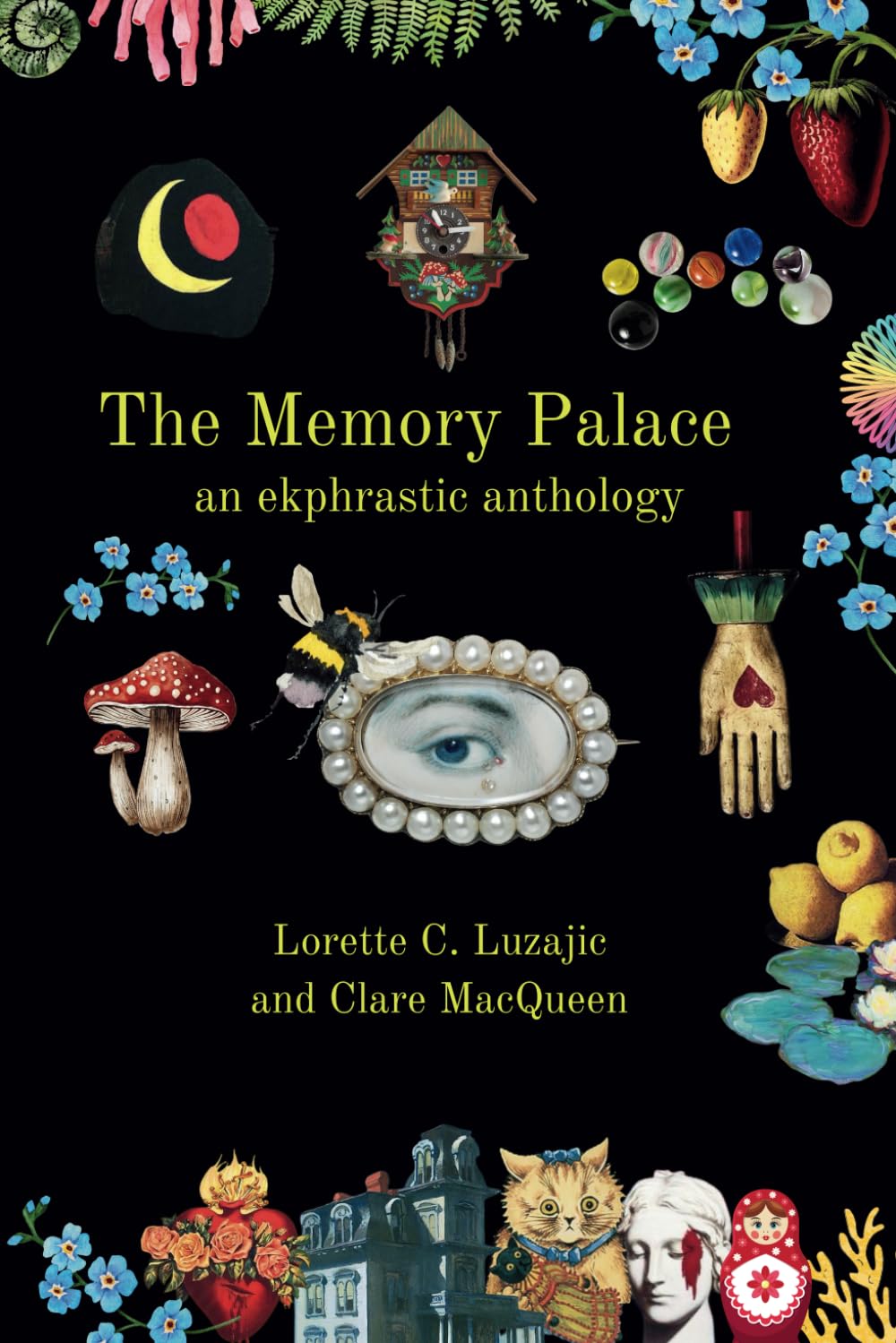|
The Virgin of Chancellor Rolin
In the 20 years since I brought this gift-shop print home from the Louvre, I’ve been eye to eye with a powerful early Renaissance man. His russet brown surcoat is covered in gold embroidery. He’s kneeling, on the left side of the image, at a lushly draped prie-dieu, his graceful fingers pressed reverently palm to palm, an attitude of prayer. Below those folded hands I see an illuminated book of prayers, more evidence of wealthy piety. There’s nothing just “off the shelf” in this man’s world. As I sit at my desk, his picture hangs to the right of me. To my left, my third-floor windows present a background of sky and a foreground of American elms, centenarians taller than my house. Sometimes the trees and sky are just what I need: visual respite for computer-tired eyes. Varieties of green in summer or branches loaded with blizzard-dropped snow. All seasons, the rich guy waits patiently for me to look his way. In the other half of the foreground, a richly-clad Virgin holds the Christ Child on her lap. Above and behind her, a hovering angel (with rainbow-coloured wings) holds an elaborately jeweled crown. The Virgin looks down, not out, as if aware that her function here is as a throne for the child on her knees, who holds a crystal orb crowned with a jeweled cross. That child has both an old man’s face and a chubby baby’s body. He is King of the World, the orb shows, but he holds it in a plump baby hand, his arm supported partly by his mother’s light grasp. His wise old gaze is turned to the kneeling man, and his other hand is raised in blessing. The man does not look back at him. I do not turn deliberately toward this image, (or I didn’t in the early days) but I sweep my eyes over it, when I’m moving right to change my music or maybe when I tilt back my chair and catch his eye. And then I’m gone, deep into the details. I’m drawn like a magnet into his face, his world and I forget about time. Three human beings occupy that foreground, but only one of them looks in my direction. Only one shows a countenance that is not fully confident of what’s being re-enacted here. The Virgin and Child have their tasks and they have completed them. Mother and child share a common complexion, a light blush across the cheeks. Only the man looks askew, with a weathered countenance. The nose, the upper lip, the cheek all are roughened red. By shaving, by weather, by living. The dark pool of his right eye (because of the angle, the only one visible) does not reflect light. It is a dark pool, matching the darkness of his hair. I can’t decide if I would like to sit across a table from him or would fear his power. His slightly turned head seems to jut out of the flat surface plane. The artist’s oils play up the skin surface, the vein descending from his temple, the furrow between his brows, that slightly sagging jowl line meeting the folds in his neck. That face, with its cragged determined particularity, and the lighter colour of its skin, stands out against both the dark and patterned space of the foreground (the checkered floor, the carved capitals) and the open sky, buildings, fields and vineyards, seen through the arches that open outward behind him. His costume and surroundings proclaim his wealth, but the face says it hasn’t been easy. Over and over, the textures and patterning and above all the face, draw me in. No monkey mind can escape the power of this meditative object. Stay still, look. And look again. I go back to his face, that human being, I can’t figure out that face. Something surges beneath the surface. Pain, pride, determination, steely reserve? In life, we often think we know a great deal about people whom we frequently see. The man is more like a fellow CTA passenger with a face that shouts, “Story here!” We have only a few stops and with a safe angle for viewing, we start guessing. And then the person’s out the door. This commuter, the one on my wall, never exits. Recently, thinking to deepen my meditation by learning more about the painting, I went surfing for more knowledge. Then, I discovered my mistake. I searched for “Memling,” “Virgin and Donor” and found nothing. Jan van Eyck, not Memling, painted this image and the man is Chancellor Rolin, a powerful figure at the 15th century court of Philip III of Burgundy. At age 60, the Chancellor commissioned this portrait for his parish church in Autun. It now hangs in the Louvre. How I made that mistake is another story. What’s important here is that the image’s ekphrastic power over me came from the image, came not from what I knew but what I saw. I love the agile, dancing smartness of art historians but I didn’t need it. For 20 years I have been free to follow my own thoughts, to begin sentences with “I,” to meditate on how difficult it is to know another human being, or on how far apart divine and human spheres are, even when painted into the very same room. I was freed from pondering the embroidered border of the Virgin’s robe or the Angel’s wings. I am not scrambling for glory in an art historical world. I gaze, I fall deep into the details, and I am freed from time and space, from the “I” of my self. Chancellor Rolin is still on my wall, waiting for me. (“The Chancellor” is better than “the rich guy,” so that’s a plus.) I hope we have many more years before us, eye to eye. Next summer, I’ve scheduled a visit to Paris, to see the Chancellor again, up close. Mary Harris Russell Mary Harris Russell, a retired English professor, lives in Chicago, meets regularly with memoir writers and, though she does not sail, has an app for the Beaufort Wind Scale on her phone. NB: The author believed this print to be from Hans Memling (15th century, Flemish). The painting is called The Madonna of Chancellor Rolin (or, The Virgin of Chancellor Rolin), by Jan van Eyck (Netherlands). circa 1435.
1 Comment
Arthur Harris
3/9/2018 08:44:24 am
I think my little sister is a genius. Who else could get so much out of a painting? The comparison of the man to a face on the CTA shouting “story here” is genius at work. And the biographical reference to the Beaufort wind scale app shows delightful humor. And she is my sister.
Reply
Your comment will be posted after it is approved.
Leave a Reply. |
The Ekphrastic Review
COOKIES/PRIVACY
This site uses cookies to deliver your best navigation experience this time and next. Continuing here means you consent to cookies. Thank you. Join us on Facebook:
July 2024
|




